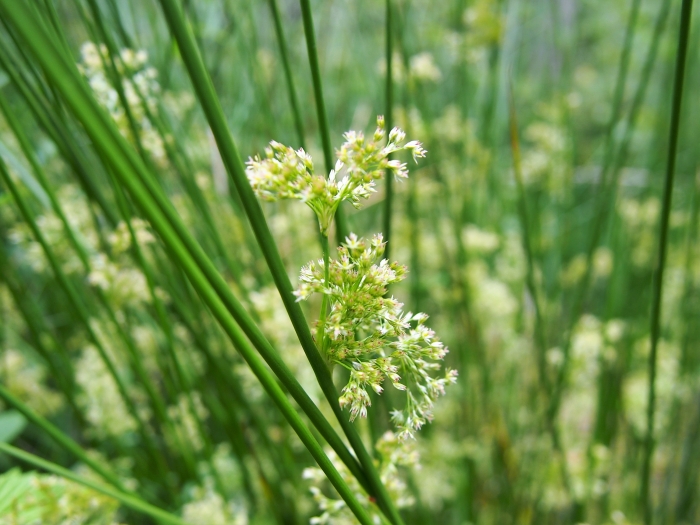Common Rush
(Juncus effusus)
Common Rush (Juncus effusus)
/
/

Agnieszka Kwiecień, Nova
CC BY-SA 4.0
Image By:
Agnieszka Kwiecień, Nova
Recorded By:
Copyright:
CC BY-SA 4.0
Copyright Notice:
Photo by: Agnieszka Kwiecień, Nova | License Type: CC BY-SA 4.0 | License URL: https://creativecommons.org/licenses/by-sa/4.0 | Uploader: Nova | Publisher: Wikimedia Commons | Title: Juncus_effusus_Sit_rozpierzchły_2019-06-27_02.jpg | Notes: User created page with UploadWizard |























Estimated Native Range
Summary
Juncus effusus, commonly known as Common Rush, is an evergreen grass-like perennial herb, that thrives in a variety of wetland habitats including marshes, wet meadows, and along the edges of ponds and streams. It is native to temperate regions worldwide, including North America, Europe, Asia, and Africa. This species typically forms dense, grass-like clumps reaching approximately 1.5 meters (4 ft 11 in) in height. The stems are smooth, cylindrical, and hollow, with a light pith filling. In summer, it produces small, greenish-brown flowers clustered at the top of stems. The lower leaves are reduced to a brown sheath at the stem’s base. Common Rush is valued for its vertical accent and texture in water gardens, native plant gardens, wildlife habitats, and for natural landscaping and restoration projects.
Juncus effusus is adaptable to a range of wet soil conditions, from standing water to moist garden soil, and can tolerate partial shade, although it prefers full sun. It is a low-maintenance plant that can be used to stabilize soil and provide habitat for wildlife. However, it can become invasive outside its native range, spreading aggressively in suitable wetland conditions. Gardeners should ensure it is not a listed invasive species in their region before planting.CC BY-SA 4.0
Juncus effusus is adaptable to a range of wet soil conditions, from standing water to moist garden soil, and can tolerate partial shade, although it prefers full sun. It is a low-maintenance plant that can be used to stabilize soil and provide habitat for wildlife. However, it can become invasive outside its native range, spreading aggressively in suitable wetland conditions. Gardeners should ensure it is not a listed invasive species in their region before planting.CC BY-SA 4.0
Plant Description
- Plant Type: Grass
- Height: 2-4 feet
- Width: 2-4 feet
- Growth Rate: Moderate
- Flower Color: N/A
- Flowering Season: Summer
- Leaf Retention: Evergreen
Growth Requirements
- Sun: Full Sun, Part Shade
- Water: Medium, High
- Drainage: Fast, Medium, Slow
Common Uses
Bank Stabilization, Bird Garden, Border Plant, Butterfly Garden, Deer Resistant, Drought Tolerant, Erosion Control, Low Maintenance, Potted Plant, Salt Tolerant, Street Planting, Water Garden
Natural Habitat
Wetland habitats including marshes, wet meadows, and pond/stream edges
Other Names
Common Names: Soft Rush, Lamp Rush, Lyse-Siv, Flatter-Binse, Flatterbinse, Junquera, Jonc À Lier, Jonc Épars, Pitrus, Junco
Scientific Names: , Juncus effusus, Juncus communis subsp. effusus, Juncus communis f. effusus, Juncus effusus var. suberectus, Juncus canariensis, Juncus communis var. effusus, Juncus expansus, Tristemon conglomeratus,
GBIF Accepted Name: Juncus effusus L.